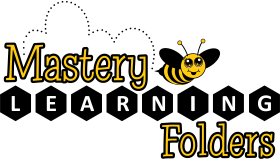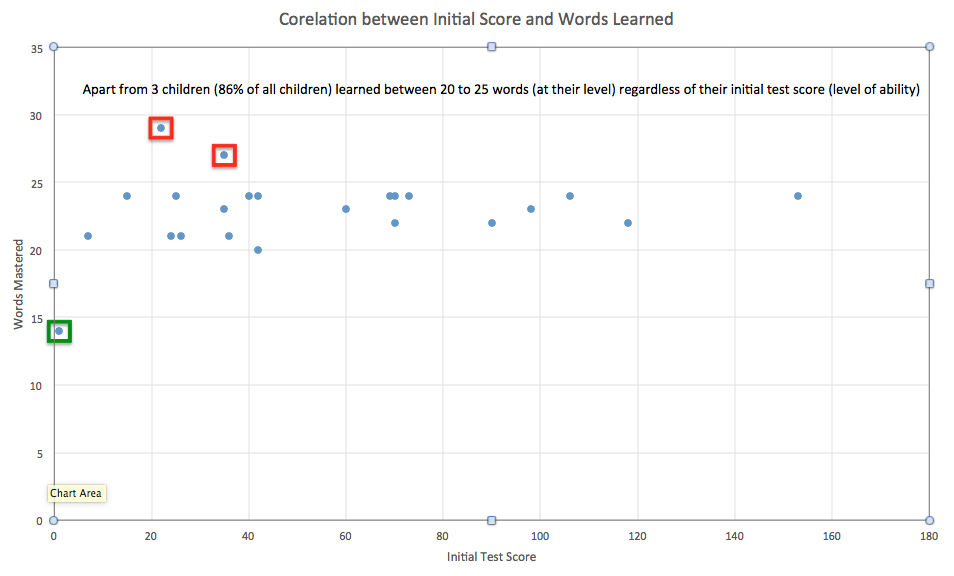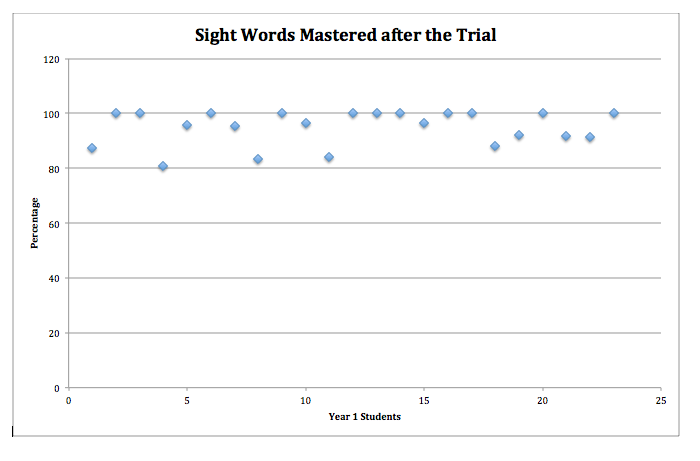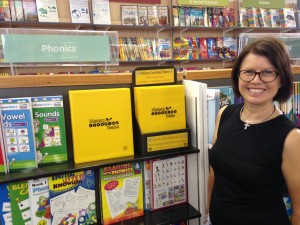In Term 1, 2015, St Brigid’s Primary School trialled the use of Mastery Learning Folders as a homework tool to supplement the sight word program in the classroom. Students were pre-tested on sight words up to the level at which they could no longer recognize the words in the next two sets. The total score of correct words was recorded. These scores varied between 1 and 153 and gave an indication of each child’s current level of achievement. The incorrect sight words for each child formed the initial learning content in the folder and pre-testing continued as required throughout the trial. The content that reached the “Test” pocket was formally assessed fortnightly and the correct sight words stored in the “Mastered!” pocket. The quantity of new flashcards added to the folder was adjusted according to individual results. The trial ran for six weeks and the sight words in the Mastered! pocket were retested in the week after the conclusion of the trial.
Learning Content Differentiation
Student learning was differentiated in three ways. Firstly, the degree of difficulty increased with each set of sight words; students received only the words they had not yet mastered, reflecting their current level of ability. Secondly, the learning load (number of flashcards) varied according to the level of ability and teacher judgement. Some students received five sight words, others received up to ten words in their folder and this was reviewed at each teacher test session. Thirdly, the cyclical nature of the mastery learning folder process meant that the time provided to learn the content was differentiated. Content that was learnt quickly moved through the folder and into the “Mastered!” pocket faster than the content that the student found more difficult. These flashcards returned to the first active pocket (the “Hive”) and could cycle back as many times as was needed for consolidation to occur.
RESULTS
Correlation between Initial Score and Words Learned
86% of students (19/22) learned between 20 – 25 words regardless of their initial test score. This suggests that the learning content was well matched to student ability and the use of the Mastery Learning Folder resulted in most children achieving success at their own level. Two of the three students that were exceptions (red squares) learnt more than 25 words despite having low initial scores. The final exception was the student with the lowest initial score (green square) who took more time and therefore learned less sight words, a result consistent with his level of ability.
Sight Words Mastered after the Trial
As words were tested correctly they were transferred to the Mastered! pocket to await the post trial test. The time delay between the initial test and the post test varied between one and six weeks depending on when the word was first tested. The lowest result was 80%, with half of the students having an instant recall result of 100%.
Statistical analysis conducted by Dr Rob Solomon B Sc. (Hons) PhD



